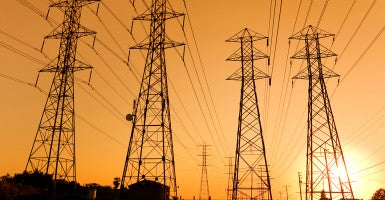“We know that low-income, minority communities would be hardest hit.”
That’s Environmental Protection Agency Administrator Gina McCarthy, speaking about the higher energy prices that would result from the Obama administration’s recently announced climate regulations on power plants.
The Clean Power Plan, which will require drastic cuts in 47 states’ carbon dioxide emissions—consequently shifting America’s energy economy away from affordable, reliable coal—will adversely impact poor minority families the most.
McCarthy downplayed that fact by saying any minimal higher prices would be offset by implementing energy efficiency measures that would save consumers money in the long run.
In fact, as part of the regulation, the EPA “prioritizes early investment in energy efficiency projects in low-income communities by the federal government, awarding these projects double the number of credits in 2020 and 2021.”
But energy efficiency programs won’t save low- and fixed-income families. While the median family spends about 5 cents out of every dollar on energy costs, low-income families spend about 20 cents of every dollar.
And the economic pain from the regulations won’t be simply the direct costs of higher energy prices. It will be the higher prices for all the goods we purchase. Energy, after all, is a necessary component to manufacture those goods.
Besides, federal and state programs already exist to promote energy savings for low-income families. Through the Department of Energy’s annual budget, taxpayers fund a weatherization assistance program to make efficiency upgrades in homes, and many state programs exist doing the same. However, many of these programs overpromise and under-deliver on energy savings.
Sherzod Abdukadirov, a research fellow on regulatory studies at the Mercatus Center at George Mason University, writes:
One recent study examined the DOE’s Weatherization Assistance Program, which helps low-income families improve energy efficiency of their homes by, among other things, paying for furnace replacement. The study found that the DOE’s models used to calculate the expected energy savings actually overestimated the savings 2.5 times. The study notes that the DOE uses similar models to estimate the energy savings for energy-efficiency standards for residential appliances. Other studies similarly found that actual energy savings received by consumers are only a fraction of the original estimates.
It is not necessarily a win for low-income families if states choose to implement more stringent energy efficiency mandates to comply with the Clean Power Plan.
In fact, it could be a big loss. Poorer families tend to have very low savings, if any at all. For many, their priorities are putting food on the table and making sure the bills are paid from month to month. They may prefer cheaper appliances and light bulbs as opposed to mandated pricier ones (studies show that they do).
While the median family spends about 5 cents out of every dollar on energy costs, low-income families spend about 20 cents of every dollar.
Forcing low-income families to pay higher upfront costs for a washing machine for dubious savings isn’t desirable if the government is taking money and choices away from more pressing needs that are in the families’ self-interest.
Driving up the price of these products for questionable long-term energy savings is doing even more harm to these families than helping them.
Arguing that increasing energy prices with regulations will save money by forcing energy-efficient product purchases is equivalent to cutting employees’ salaries and telling them that they will save money by shopping at Target. Just as the option to save money at Target existed before the pay cut, families and businesses already have an incentive to purchase energy-efficient products.
When the government mandates efficiency, it removes that choice and makes consumers worse off.
States could also choose not to implement energy efficiency mandates. They could instead put in place a carbon tax, implement a cap-and-trade program, or force pricier renewable energy mandates on families and businesses.
The point is, no matter what states choose to do, the economic pain will be felt, which is why Congress and state officials need to reject the regulation entirely.
A few weeks ago, President Barack Obama blasted critics of his Clean Power Plan, saying, “Even more cynical, we’ve got critics of this plan who are actually claiming that this will harm minority and low-income communities—even though climate change hurts those Americans the most, who are the most vulnerable.”
But this plan will hurt minority and low-income families the most, as McCarthy has admitted. And energy efficiency handouts and mandates are certainly not going to be a panacea for the federal government’s energy-raising, job-crushing climate regulations.
Originally distributed by the McClatchy Tribune wire.






























